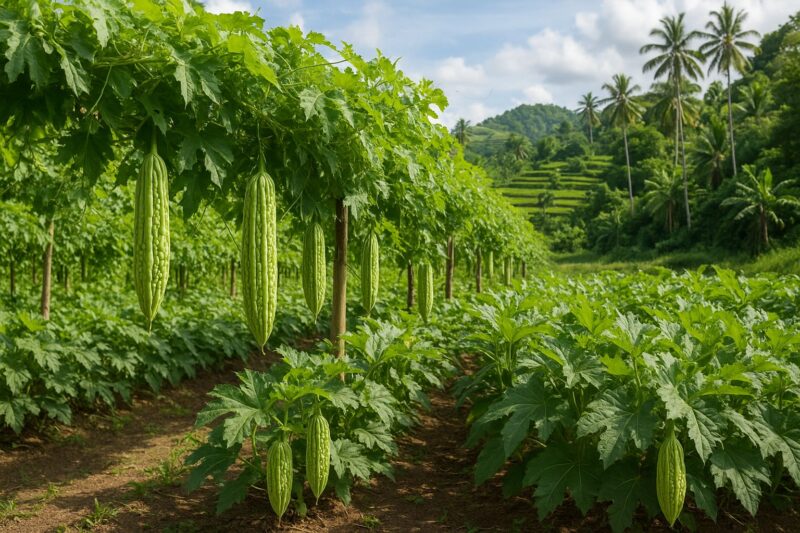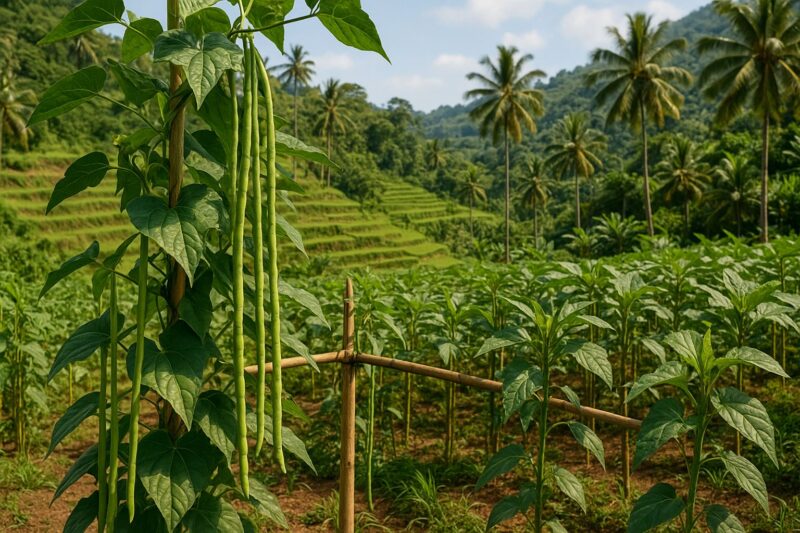Taro—gabi—has nourished Filipino families for generations, from the creamy laing of Bicol to the earthy ginataang gabi in Luzon’s uplands. Its starchy corms and tender young leaves fit seamlessly into both everyday meals and festive occasions. Yet, cultivating gabi under our tropical conditions demands specific care: balanced moisture, pest vigilance, and proper timing. After several seasons of tending taro patches in Bulacan—and swapping tips with growers from Cavite’s lowlands to Bukidnon’s cooler slopes—I’ve honed a routine that consistently produces robust corms and lush greens. Here’s how to adapt it anywhere from Mindoro shores to Mindanao valleys.
Choose the right variety first. In lowland provinces—Bulacan, Pampanga, and Iloilo—the large-corm gabi type thrives, yielding tubers weighing three to five kilos apiece under good care. In upland areas—Benguet and Bukidnon—cold-tolerant varieties with smaller corms but earlier maturity work best; they’re ready in seven to eight months rather than nine to ten. I rotate both in my Bulacan plot: upland types on slightly raised beds and lowland giants in wetter hollows. Each has its niche.
Soil preparation sets the stage. Gabi favors deep, loamy soil rich in organic matter and with good water-holding capacity. In heavy clay sites, I incorporate two wheelbarrows of homemade compost plus rice hull charcoal per ten square meters to improve structure and aeration. Sandy coastal soils—common in Palawan and Zamboanga—benefit from added coconut coir or well-rotted manure to retain moisture. Aim for a pH between 5 point 5 and 6 point 5; if your soil trends more acidic, a light dressing of agricultural lime will help.
Planting aligns with the onset of predictable rains. In most lowland regions, that’s June to July; in higher elevations, you might wait until September to avoid cooler pre-monsoon nights. Set corm pieces—each with at least two healthy eyes—about ten centimeters deep in furrows spaced eighty centimeters apart. Cover with soil, firm gently, and water thoroughly. In Bulacan, I start planting just before the first heavy rains, giving sprouts a swift start.
Water management is crucial. Young gabi shoots need consistent moisture, but standing water invites rot. I water deeply early each morning to settle soil around the corms, then allow surfaces to dry by afternoon. In low-lying beds, simple drainage channels—dug alongside rows—keep water moving. Raised beds and mounded planting ridges help in areas where flooding is common, such as riverine Pampanga.
Feeding focuses on organic matter. At planting, I scatter a handful of bone meal in each furrow for phosphorus. Three months in, when leaves reach about fifty centimeters tall, I side-dress with decomposed chicken manure—about one kilo per plant row—to boost both leaf and corm development. Too much nitrogen at this stage encourages leaf growth only; balance with potash—wood ash or banana-stalk compost—around the drip line for a fuller harvest.
Weed control is part of the routine. Shallow hoeing two to three times during the first four months keeps weeds in check without disturbing developing corms too deeply. Mulching with rice straw once shoots emerge suppresses weeds and conserves soil moisture, letting the taro focus on growing.
Pests and diseases remain minimal but deserve attention. Taro leaf blight—a fungal issue—manifests as brown lesions under humid conditions. Removing affected leaves promptly and spacing plants to improve airflow helps. Taro planthoppers sometimes hop onto young leaves; a morning inspection and hand removal suffices in small plots. I avoid chemical sprays, preferring a light flush of water or a dusting of wood ash to deter pests.
Harvest timing depends on variety. Upland types mature in about eight months—when lower leaves turn yellow and die back—while lowland giants need nine to ten months, signaled by dying foliage and firm corm shoulders. I dig a test plant with a fork to check corm size and skin texture; ready corms have a smooth, firm outer layer and snap cleanly when cut. Full harvest happens after a few dry days, keeping corms out of mud to prevent postharvest rot.
Postharvest, leaves—the young, tender tops—can be harvested separately throughout the growing season. I snip outer leaves every three weeks, blanching them to remove irritant hairs before cooking. The corms store best in a cool, shaded, well-ventilated area for several weeks; curing them for two days under shade toughens skins against pests.
One Bulacan season, after an unexpected June typhoon flooded the lower beds, I feared a total loss. By shifting to mounded beds and pruning broken leaves, the taro rebounded, offering a late September harvest of corms smaller than usual but still plentiful. That resilience underpins taro’s value as both food and a buffer against crop risk.
Whether you’re planting sprawling lowland types in wet fields or compact upland varieties on raised mounds, mastering soil health, moisture balance, feeding, and simple pest checks will yield bountiful taro harvests across the Philippines. Gabi may require patience—up to ten months for full maturity—but its dependable yields and dual harvests of leaves and corms reward your efforts season after season.
I’m open for consulting and speaking opportunities on sustainable vegetable production and agribusiness nationwide. Let’s cultivate resilience together.
#Gabi #Taro #PhilippineFarming #SustainableAgriculture #UrbanGardening #ConsultingAvailable #SpeakingOpportunities




